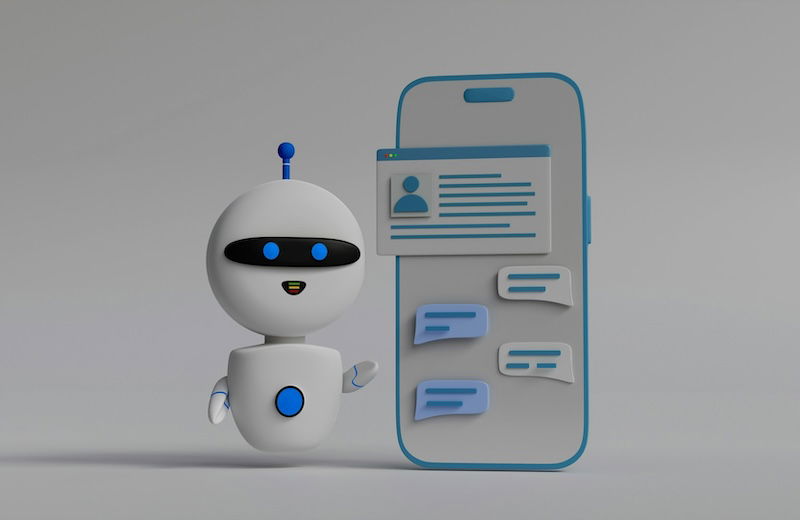Introduction
Social media platforms such as Facebook, X and Instagram have not only changed the way we communicate but also how we learn and acquire knowledge. Platforms have become spaces for disseminating academic knowledge, where science communicators convey academic knowledge to the public as “the new type of influencers” (Zhang & Lu, 2023). Unlike commercial influencers who tell us what to buy, academic influencers educate us about various topics. On TikTok, for instance, we see videos about health, climate change, and many other topics in which science communicators debunk myths about their professions and share research findings under the hashtags #ProfessorsOnTikTok, #LearnOnTikTok, and #SciComm (Zeng et al., 2021). While science communicators can be faculty members who create media content in their free time (Huber & Quesada Baena, 2023), others may not have an academic profile, and their professional profiles are diverse.
Platformisation of science communication
Science communication presents science in ways that are understandable to the public. It can take various forms, such as documentaries, podcasts, science journalism, blogs, books, and museums (Burns et al., 2003). With the advent of social media platforms, science communication has increasingly taken the form of digital visual and textual posts (Liang et al., 2014). Platforms shape digital content production, circulation, and distribution, and academic influencers, science communicators with high numbers of followers on social media, must adhere to how platforms operate (Poell et al., 2021).
The way platformisation shapes these activities stems from how platform companies create and capture value. Social media platforms function as online spaces that primarily sell advertising. Users can join these activities for “free” in exchange for their data being collected, stored, and categorised, and then platforms sell user profiles for targeted advertising. The more users join a platform, the more user profiles a platform collects, and the more attractive such a platform becomes to advertisers. This dynamic, in which an extensive user network attracts even more users, is called network effects, and it is central to how platforms create and capture value (Rochet & Tirole, 2003; Rysman, 2009).
Social media platforms use various strategies to attract users and increase their engagement. They create digital infrastructures that allow users to create, edit, and share content, navigate that content through internal search, hashtags, and keywords, and express their opinions through likes and comments. Platforms implement algorithmic ranking to organise and present content in a way that appeals to users. Our platform of interest, TikTok, uses a complex filtering mechanism that is not only based on user engagement statistics (the number of likes, shares, and comments) but also on whether this content falls into “Trending Topics.” TikTok keeps the algorithms behind Trending Topics a secret, but what is known is that it combines human and algorithmic content moderators, current global events, and users’ content preferences. If content belongs to one of the trending topics defined by TikTok, then the platform promotes such content and directs more user traffic to it (Zhang, 2021).
Like other influencers, science communicators must follow social media platforms’ rules to make their content attractive and easily discoverable. Their creative process begins with selecting a topic (in their case, a piece of scientific knowledge), then staging scenes, writing scripts, filming, and editing (Abidin, 2016). When choosing a topic, academic influencers assess the potential of such content to generate value, which comes in the form of user numbers and engagement, such as views, comments, and shares (Duffy et al., 2021). TikTok videos usually have a solid opening statement or “attention-grabbing hook,” a strong visual appeal, and use specific sound effects. Then, to boost their metrics, academic influencers must remain consistently active on a platform, for example, by posting regularly and frequently engaging with others’ content.
Between academic and online content: Values of science communication
Generally, influencers must balance platform guidelines and user expectations in creating commercially appealing content while maintaining authenticity and creativity. “Authenticity” is one of the critical principles of content production on social media, and it generally refers to genuineness, originality, and realness (Hund, 2023). “Being authentic” on social media may mean having a unique perspective, sharing their personalities, and striving to be ‘real’ (Arriagada & Bishop, 2022; Hund, 2023; Craig & Cunningham, 2019; Banet-Weiser, 2012). “Creativity” is yet another principle of content production. Content creation is seen as inherently creative, and influencers are generally expected to produce unique, imaginative, and engaging digital material that presents new ideas or perspectives. Meeting the creativity standard helps to maintain audience attention on oversaturated social media platforms (Duffy et al. 2021).
While social media and academic content production serve different purposes, scholars and content creators emphasise creativity, novelty, and originality in their work. Values are fundamental to academic life, as they shape the ethical framework for academic conduct (Archer, 2008). Central to this framework are the liberal values of truth, critical inquiry, intellectual freedom, and knowledge that benefit society (Winter & Donohue, 2012). The principle of academic integrity is closely linked to these values and defines ethical guidelines for academic practices and behaviour (MacFarlane et al., 2014, p. 340). The International Center for Academic Integrity (ICAI) outlined six principles of academic integrity: honesty, trust, fairness, respect, responsibility, and courage (ICAI, 2021). Fundamentally, academic integrity revolves around maintaining transparent and trustworthy scholarly work while cultivating an environment that supports learning and progress. Violations such as plagiarism and cheating are major breaches of these norms (MacFarlane et al., 2014).
A more recent approach highlights the importance of authenticity in academic work, emphasising the significance of “being true to oneself” rather than imitating others. It portrays academic culture as authentic, valuing passionate labour, personal freedom, and genuine self-expression, and views scholarly work as an empowering and passionate activity (MacFarlane et al., 2014; Canizzo, 2017).
As novel technologies emerge and transform practices, they can challenge existing norms and values. The rise of generative AI has raised concerns among scholars, who argue it undermines fundamental academic values like honesty, trust, and fairness by facilitating automated plagiarism without proper citation (Van Rooij, 2023; Cotton et al., 2023; Susnjak & McIntosh, 2024). Generative AI brings various challenges and opportunities for cultural production, such as generating ideas, writing scripts, and creating images from text prompts (Epstein et al., 2024, p. 1110). Others have observed that generative AI will challenge the cultural norms and values surrounding social media content production (Content Creator Scholar Network, 2024).
As AI continues to shape the professional practices of academia and social media content creation, we want to examine how science communicators respond to this new technology.
Asking the experts
Tinca Lukan conducted ten in-depth interviews with social science communicators on TikTok, whose follower counts ranged from 2,000 to 110,000. The topics covered in their content spanned sociology, anthropology, and psychology. All science communicators professionally belong to academia. Only three were master’s students, while the remaining seven were employed at various levels within universities, ranging from PhD students to full professors. Among the many questions about their work as science communicators, the researcher asked their opinions on using generative AI in their creative processes for producing science-related social media content. It’s important to note that when asked about generative AI, all participants predominantly referred to ChatGPT.
Two camps of science communicators and related norms and values
Science communicators are divided on generative AI. Some reject it, while others embrace it. Both groups justify their positions based on their interpretations of ‘academic professionalism’ and ‘academic integrity,’ as well as on the norms of authenticity and creativity that drive social media content production.
Strictly against it: “I do not want to plagiarise someone else’s work.”
Science communicators who oppose using generative AI have raised several ethical concerns, including issues of intellectual integrity, the perpetuation of biases, lack of transparency, and potential quality loss of their content.
Generative AI tools like ChatGPT are trained on diverse datasets but do not disclose the origins of this data. Therefore, academic content creators are unable to verify the originality of the generated content or ensure appropriate attribution to original authors. This conflicts with established academic practices of proper citation (Entwistle, 2009; Noble, 2018; Park, 2010). As one participant noted:
“I don’t use and probably never will for a few reasons. Generative AI has a lot of ethical problems in terms of taking other people’s work. You have to give credit to people. If you are going to say something similar to someone else, you should say so, like this is coming from some stuff I saw before. I would hate to be accidentally involved in something like that, and there’s a real possibility of that /…/ I don’t want to be involved in plagiarising somebody else.”
Further, science communicators highlight that generative AI lacks intellectual depth because it draws from past data. For instance, the reason for not using AI tools was the perpetuation of gender bias and stereotypes:
“No, I never use it. Instead, in my content and in my academic work, I talk a lot about gender bias in AI and how it perpetuates it. So no, I don’t want to be involved in reproducing this.”
At the same time, the unoriginal data on which generative AI draws undermines creativity and personal expression, both of which are integral to social media content production. Interestingly, while AI can potentially generate multiple content pieces for social media, some content creators reject its use in favour of producing fewer but more creative and thus valuable content:
“I find it intellectually lacking. It might be good for initial work but doesn’t give you anything creative. In science communication, it’s all about your own personal perspective that people value, your creativity, and using AI would be like cheapening it. I would rather make less content than make more that is inauthentic.”
Another creator shared how they attempted to use a prompt to generate a video script in their style, but AI failed miserably. They realised with relief, “I asked ChatGPT to provide me with a video script in my own style, but it was irrelevant. I’m still useful.” This comment underscores the central role of human ingenuity and creativity that cannot be replaced with AI.
Building bridges: “I like to use AI to bring me back down to the general audience’s expectations.”
Creators who support generative AI argue that it helps them capture people’s attention, stand out in the enormous landscape of digital content, and make their material more understandable to the general audience.
One creator, for instance, uses generative AI to help craft “hooks” — questions or statements placed at the start of a video to capture the audience’s attention, often using clickbait and sensationalistic language, opening the floor to talk about scientific matters. In her words:
“I don’t use it to produce an entire video, but sometimes I use it for ideas for hooks. So, to get people’s attention, I am using it. You have to get their attention, and you have to have a good hook. I know my videos can sound clickbait-y, but once I get people’s attention, I can talk about science and convey ideas they wouldn’t necessarily encounter if my content did not have a good clickbait hook. There are ways it could be helpful without turning it into a bad thing”.
Using catchy statements as a tool for audience manipulation may contradict the professional values of science communication, which emphasise adherence to principles of accuracy, clarity, and ethical practice (Cahn, 2010). As she explained, hooks are necessary in the attention economy of social media, and the value of delivering science-based content after capturing users’ attention prevails.
A different creator shared another reason for incorporating generative AI into the creative process. He noted that the specialised language used in academia can be complex for the general public to understand. To address this, he uses ChatGPT to make his content more accessible and engaging for a broader audience. The content creator described his process of using generative AI as follows:
“I use it to help me outline topics. I asked ChatGPT to give me ten points about a topic. As academics, we have knowledge, but sometimes we lose sight of what people do not know. I have been guilty of that, and you can easily lose an audience. So, I like to use AI to bring me back down to the general audience’s expectations. For example, I made a prompt, ‘assume that I’m starting with zero knowledge about misinformation in the news media,’ and there were several very foundational points that I would risk just skipping over.”
This approach emphasises the importance of bridging the gap between academia and the public and highlights AI’s instrumental role in achieving this goal.
Conclusion
We examined the norms and values surrounding the use and rejection of generative AI among science communicators on TikTok and offered several insights and observations.
As a new phenomenon, science communication on social media integrates the different values and practices of academic work and commercial content production. Science communicators demonstrate ongoing skepticism about using AI (at least the current version of generative AI like ChatGPT) for developing scripts and forming arguments due to its contradiction to the values of academic integrity, authenticity, and creativity. Many content creators from academic backgrounds reject AI because they fear digital transformation may compromise quality, reduce control, and erode traditional practices.
However, some academic influencers embrace the new technology. They use AI instrumentally, particularly for editing their content and adapting it for the context of social media entertainment. By leveraging digital platforms such as TikTok, communicators extend the reach of their research findings to diverse audiences, but this requires tailoring their content for user expectations and a platform commercial infrastructure.
As platforms increasingly shape how we work and live, they also impact the dissemination of science to broader and younger audiences. Further research is needed to understand science communication on social media, including the driving norms and the specific knowledge being shared. Such studies are essential for developing guidelines and best practices to ensure that science communication remains accurate, ethical, and effective in the digital age and across online environments.









Leave a Comment